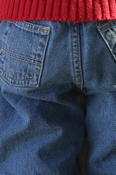


|
|

|
|
|

Body Composition Changes and Exercise24 April 2006 Dear Chris, There is so much talk today about losing weight. What about retaining weight and muscle? I am an energetic, healthy 66 yr. old female. It seems of late my appearence is changing. I have lost fat from my posterior or "rear" but overall weight has not changed. Are there specific exercises that I can do to firm up in these areas ? Bev Dear Bev, The changes you are seeing are changes in body composition, the make-up of our body mass, primarily as fat, muscle, and bone. Even with physical activity, changes in body composition occur as we age. One of the biggest changes we notice is the redistribution of fat and the decrease in muscle mass (sarcopenia). For women in their 60s, fat starts to form in the mid-section as it does with men at a much younger age, even if they were not overweight previously. The distinction between the female "pear-shape" and male "apple-shape" becomes less pronounced by the 7th decade. However, subcutaneous (under the skin) fat tends to decrease in the limbs in both genders. There is also notable bone loss in post-menopausal women. With all of these changes to body composition, body weight often stays the same or even goes down a bit. This is why body weight (measured on the scales) is not a good way to judge body composition and overall health. During this period of gains, losses, and redistribution, it is very important to be physically active and exercise regularly. Many of these changes come with higher risk of illness (morbidity) and loss of function and independence. Fat in the mid-section, for example, has a high potential to be released into the liver, becoming a risk factor for high cholesterol and Type II diabetes. A lot of these changes were not that relevant in generations past because life expectancy was lower. Now with most people living well into the 70s and 80s and many living into their 90s, it is important to lessen the impact of these changes so those extra decades can be lived as comfortably and vitally as possible. Bev, you are well on your way to good health by being active already. Just make sure that your activities are varied enough so that you are getting cardio-vascular, muscle conditioning, balance, and flexibility training. You asked about specific exercises you could do to firm up the areas which seem to have lost some muscle tone. I recommend doing wall squats and other thigh and buttocks exercises. These will not only give you a firmer buttocks but will greatly assist you with activities of daily living.
To help reduce the fat you may have gained, make sure that you are active aerobically by doing such things as vigorous walking, cycling and everyday activities like gardening and housework. It's also a good idea to add formal, structured exercises, by going to fitness classes, swimming, using a treadmill, elliptical trainer, or stationary bike. A variety of these activities is best because they all challenge the heart and lungs differently. By burning extra calories and not compensating for that loss by over-eating, you can expect to lose weight that will stay off--unlike the yo-yo effect that comes with so many of the commercial diets. Additionally, incorporate resistance training to help you build back the muscle you are losing with age. I mentioned wall squats for the thighs and buttocks. You can also do leg raises and thigh "kick-backs" lying on your side on a mat. You will be surprised that just lifting your leg slowly and controlled against gravity, especially if you relax your foot as if it were a dead weight, will provide enough resistance to strengthen the leg. Alternatively you can add ankle weights or use resistance bands (my favourite). If you have access to gym equipment, you can do leg presses, hip extensions, leg curls, and knee extensions on the machines there. It is also important to strengthen the core (abdominal regions and lower back). While lying on your back, you can do abdominal curls, or try lifting a stability ball by squeezing it between your ankles with your knees bent. This will do wonders for firming up the tummy. And don't forget your lower back -- you will want to strengthen the muscles which support it by doing exercises such as alternate arm/leg lifts while lying on your stomach. Walking is a great way to not only strengthen the heart and lungs (provided it's a vigorous walk) but also to reduce bone loss in the lower body. (Bones that bear weight grow stronger.) So, the main message to improve your body composition is:
You may not see any weight loss, but you will start noticing body composition changes: less fat in the areas which pose health risks, stronger and firmer muscles, and stronger bones. Apart from an aesthetic improvement, you'll feel better and be healthier for it. As always, talk to your doctor first before beginning any exercise program to ensure that you make the modifications needed if you have medical or health conditions which could be worsened by certain types of activity. I'd also recommend hiring a personal trainer if you want some specific instruction or help with motivation. To your health Chris Information on stayingstrong.ca should not be used for diagnosis, nor should it be considered a replacement for consultation with a healthcare professional. If you have questions or concerns about your health, please contact your healthcare provider. |
|